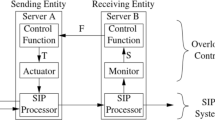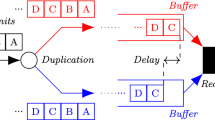Abstract
Wireless networks differ in bandwidth, size and access costs each requiring a set of protocol functions to enable devices to communicate efficiently. Portable multimedia devices such as PDA's and laptops will also vary greatly however all these devices will require optimal multimedia delivery. A traditional method is for sources to limit their transmission rates to accommodate lower bandwidth links, even though high-bandwidth connectivity is available to many participants. This method similar to others does not provide optimum throughput to heterogeneous clients due to its quest for a common denominator bandwidth. In addition, due to the divergence of users and applications, traditional protocol stacks are frequently enriched with additional functionality such as transport protocol functionality, synchronization and presentation coding which can lead to a performance bottleneck due to the insufficient processing power and memory of portable devices.
Micro-protocols attempt to eradicate this bottleneck by optimising the protocol stack to the functionality that is actually required by the application. A side effect of this is that it allows a device such as a PDA to offer protocol functions, which would not normally be available due to its memory constraints achievable by downloading necessary micro-protocols for new environments and discarding previous micro-protocols. Multicast media groups overcome the heterogeneous client problem where clients subscribe to different quality of services in accordance with resource availability and move between groups according to bandwidth availability.
Chameleon is 100% Java middleware for multimedia streaming to heterogeneous mobile clients, which allows the dynamic configuration of protocols with respect to application requirements and available network resources. We evaluate the dynamic reconfigurability of the middleware in order to demonstrate runtime adaptation. We especially concentrate on the primary quality transformation technique (PQT) of the middleware which enables clients to subscribe to media groups in accordance with available resources and network capacity.
Similar content being viewed by others
References
L. Peterson and N. Hutchinson, “The X-Kernal: An architecture for implementing network protocols,” IEEE Transactions on Software Engineering, Vol. 17, No. 1, pp. 64–76, 1991.
Streams Programmer's Guide. Unix System V Release 4.
M. Kojo, K. Raatikainen, M. Liljeberg, J. Kiiskinen, and T. Alanko, “An efficient transport service for slow wireless telephone links,” IEEE Journal on Selected Areas in Communications, Vol. 15, No. 7, 1997.
G. Parr and K. Curran, “A paradigm shift in the distribution of multimedia,” Comms of the ACM, Vol. 43, No. 6, pp 103–109, 2000.
Eytan Modiano, “An adaptive algorithm for optimizing the packet size used in wireless ARQ protocols,” MIT Lincoln Laboratory, Lexington, MA 02420-9108, USA. Wireless Networks, Vol. 5, No. 4, 1999.
Society Of Cable Telecommunications Engineers. Audio codec requirements for the provision of bi-directional audio service over cable television networks using cable modems. Document: SCTE DSS-00-01 Date of Original Issue: March 1, 2000 Date of Latest Revision, 2000.
D.D. Clark and D.L. Tennenhouse, “Architectural considerations for a new generation of protocols,” in Proc. ACM SIGCOMM'90, 1990, pp. 200–208.
S. Maffeis, “Building reliable distributed systems with CORBA, theory and practice of object systems,” John Wiley, Vol. 3, No. 1, 1997.
A.D. Joseph, J.A. Tauber, and M.F. Kaashoek, “Mobile computing with the Rover toolkit,” IEEE Transactions on Computers, Vol. 46, No. 3, pp. 337–352, 1997.
W. Heinzelman, Application-Specific Protocol Architectures for Wireless Networks. PhD Thesis, Massachusetts Institute of Technology, 2000.
Elliot Poger and Mary Baker, “Secure public internet access handler (SPINACH),” in Proceedings of the USENIX Symposium on Internet Technologies and Systems, 1997.
Golm, Michael and Kleinöder, Jürgen, MetaJava, Presented at STJA '97, 1997, Erfurt, Germany.
B. Zenel and D. Duchamp, “Ageneral-purpose proxy filtering mechanism applied to the mobile environment,” in Proceedings of MobiCom '97 Budapest, Hungary, 1997.
M. Van Steen, Tanenbaum, and P. Homberg, “Globe: A wide-area distributed system,” IEEE Concurrency, 1999, pp. 70–78.
Author information
Authors and Affiliations
Rights and permissions
About this article
Cite this article
Curran, K., Parr, G. An End to End Adaptable Architecture for Streaming Media over IP Networks. Multimedia Tools and Applications 20, 225–236 (2003). https://doi.org/10.1023/A:1024020221086
Issue Date:
DOI: https://doi.org/10.1023/A:1024020221086




